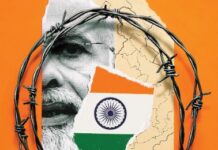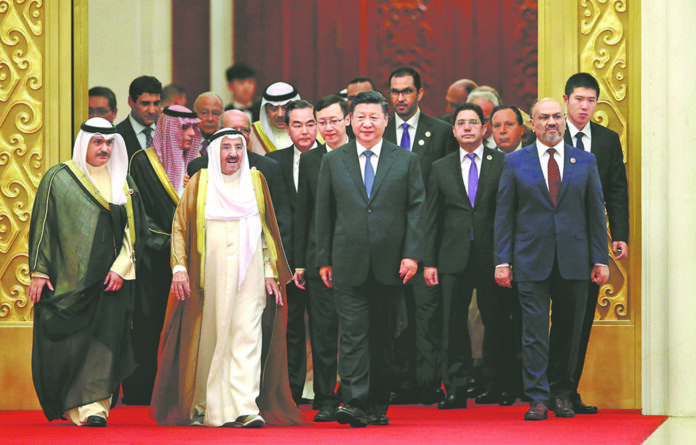After a period of confidential discussions between representatives of Iran and Saudi Arabia, with the aid of Chinese mediation, it was announced in mid-March that Tehran and Riyadh would renew their diplomatic ties after seven years of regional hostilities. As part of the reconciliation agreement, King Salman bin Abdulaziz Al Saud formally invited President Ibrahim Raisi to visit Riyadh. Iranian Vice President Mohammad Mokhbar disclosed that Raisi had accepted the invitation, while Iranian Foreign Minister Hossein Amir Abdullahian stated that Iran would extend a similar invitation to the Saudi king. The sustainability of the détente between Saudi Arabia and Iran remains uncertain. Nonetheless, China’s role in resolving this diplomatic impasse between two key regional powers might signal the start of a multifaceted process of de-Westernization in the region.
In December 2022, Chinese President Xi Jinping traveled to Riyadh to attend the inaugural Sino-Arab States Summit. In February 2023, President Raisi journeyed to Beijing at the formal invitation of his Chinese counterpart. These high-level diplomatic meetings reflect China’s political outlook in the Persian Gulf: to establish alliances with all major regional powers and fill the political void left by the West.
As geopolitical rivalry between major powers grows, the world is becoming less Westernized. A rising number of interrelated crises around the world and decreasing participation of Western powers in various conflicts outside of Europe have resulted in a shift towards multipolarity. According to Xi, “Today’s world is undergoing profound changes that have not been seen in a century.” A central aspect of this post-Western world order is a fluid and situation-specific network of strategic partnerships between global and regional powers, primarily driven by pragmatic rather than ideological considerations. In contrast to the USA, China has developed friendly ties with all countries in the Middle East. Beijing has signed multiple comprehensive bilateral strategic partnerships on both sides of the Persian Gulf, highlighting the adaptability of its non-aligned diplomacy.
The Chinese-mediated agreement between Riyadh and Tehran signifies the growing inclination of regional players to leverage the emergence of alternative global powers to the detriment of the US and the West in recent years. The USA has been the primary external actor in the Middle East for decades, but its recent reluctance to engage in regional crises has given local governments a greater incentive to interact with other available external powers, especially in Asia. In a sign of the Gulf’s move towards a more Asia-centric policy, Saudi Arabia and other members of the Gulf Cooperation Council (GCC) have considerably increased their trade with the Asia-Pacific region, comprising approximately 60 percent of that trade.
Moreover, reports have surfaced that China and Saudi Arabia are exploring the possibility of conducting oil transactions in Chinese yuan rather than US dollars, which could have far-reaching implications for the global economy and the role of the US dollar as the world’s reserve currency.
Actually, the Arab leaders perceive that Washington has ceased to prioritize the Middle East, particularly after the Obama Administration proclaimed a “pivot to Asia” strategy. This perception has ramifications for defense and security, for the Arab nations have taken steps to lessen their reliance on the USA as a security provider by developing their national defense sectors. They have repeatedly sought the aid of China to achieve these objectives. For instance, Saudi Arabia has commenced the development of its ballistic missiles with China’s assistance, while the United Arab Emirates has permitted Beijing to establish a military base at one of its ports, albeit after US officials raised concerns.
China is positioning itself as an external power capable of managing conflict through mediation and diplomacy, focusing on business, stability, and common interests, rather than seeking regional dominance. On the other hand, the West has frequently attempted to resolve regional conflicts through coercion.
For Iran, the further “Asianization” of the Persian Gulf is a blessing. Iranian leaders, particularly the conservative decision makers, view China’s increasing political and economic influence in the region as being detrimental to the USA. Thus, contrary to the expectations of many analysts, Tehran supports the expansion of relations between the GCC member states and China, as well as the growing political influence of Beijing in the region. The withdrawal of the Trump Administration from the 2015 Iran nuclear deal (the Joint Comprehensive Plan of Action or JCPOA) has strengthened Iran’s belief that China recognizes its status as a regional power, evident by China’s support for Iran to become a full member of the Shanghai Cooperation Organization (SCO) later this year. The SCO, led by China, is a symbol of Asianization, and Saudi Arabia’s recent decision to join the organization as a dialogue partner will bolster the region’s trend towards Asianization.
Beijing’s diplomatic mediation between Tehran and Riyadh aligns with China’s objective of playing an active role in international politics and reshaping the world order based on its declared vision of common, comprehensive, cooperative, and sustainable security. This objective is part of China’s broader renewal strategy, which has been in place since 2012. By hosting the signing of the diplomatic rapprochement between Saudi Arabia and Iran, China seeks to establish itself as an active and responsible global player in resolving disputes through diplomatic means. This role as a mediator follows China’s release of a 12-point position paper in February aimed at resolving the Russia-Ukraine conflict. China’s recent talks with both the Russian and Ukrainian presidents demonstrate its evolving role as a world peacemaker and contrast with the USA’s reputation as a global policeman.
China’s strategic and economic interests in the Middle East, specifically energy security, are centered in the Persian Gulf. Hence, China has signed three comprehensive strategic partnerships and four strategic partnerships with the Persian Gulf states. Furthermore, Beijing has proposed hosting a high-level summit between Iran and the GCC members in 2023, which would enhance China’s role as a peacemaker in the region and potentially usher in a new framework of peacekeeping and security based on the principles of the Global Security Initiative (GSI), a concept paper issued by the Chinese Ministry of Foreign Affairs in February 2023. The commitment between Iran and Saudi Arabia indicates the practical acceptance of the GSI and confirms China’s commitment to strengthening the security dialogue through this initiative.
The USA’s role in this diplomatic development in the Middle East is a concern. Since the end of World War II, the USA has been the principal global power involved in the Persian Gulf, finalizing all significant diplomatic agreements in the region. Nevertheless, a Chinese-brokered agreement and Beijing’s comprehensive strategic partnership agreements with both sides of the Persian Gulf could represent a possible alternative to a US-led regional order based on a US-led alliance and a robust US military presence in the region.
China is positioning itself as an external power capable of managing conflict through mediation and diplomacy, focusing on business, stability, and common interests, rather than seeking regional dominance. On the other hand, the West has frequently attempted to resolve regional conflicts through coercion.























